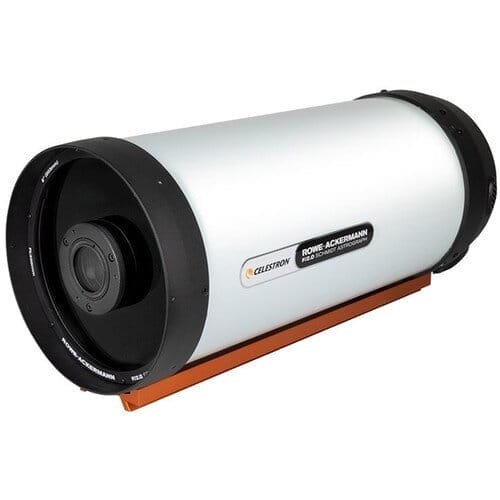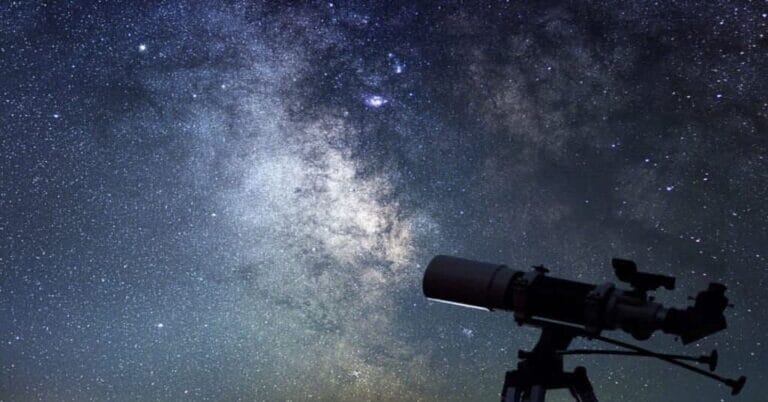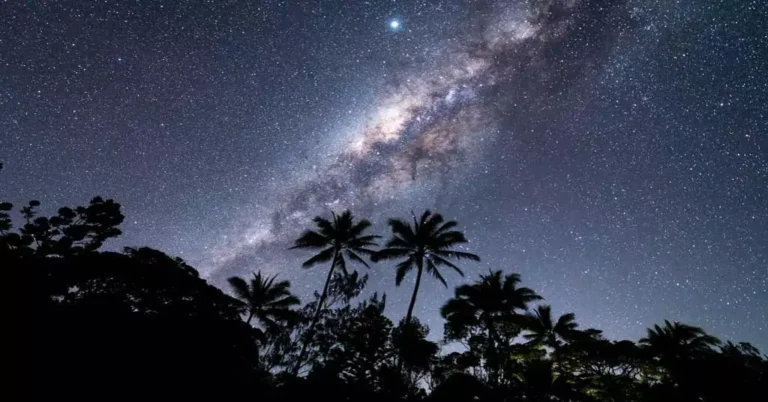Exploring the Stars – Choosing the Best Telescopes for Astrophotography
Astrophotography is more than a hobby. It lets you explore the universe from your backyard. To capture the beauty of the night sky, you need the right equipment. A telescope is essential. But with so many options available, how do you choose the best one for your needs? This guide helps amateur astronomers, and photography fans, choose a telescope for astrophotography. You’ll learn about key features and different types of telescopes. This will help you start your adventure into the stars.
Jump to:
- Telescopes for Moon and Planetary Photography
- Perfect for planetary photography
- Telescopes for Deep-Sky Objects
- Best Astrophotography Telescopes for Beginners
- Perfect Entry-level
- Top Choice For Astrophotographers
- Good For Advanced Astrophotographers
Choosing the Right Telescope
Choosing the right telescope can make or break your astrophotography experience. The right telescope will capture stunning images of celestial objects. The wrong one might cause frustration. In this post, we’ll cover the basics of astrophotography equipment. We’ll discuss key features to look for in a telescope. We’ll also provide tips for beginners and advanced users.
What is Astrophotography?
Astrophotography is the art of photographing astronomical objects like stars, planets, and galaxies. This field mixes the technical side of photography with the beauty of the cosmos.
Types of Astrophotography
- Planetary Photography: Capturing detailed images of planets, moons, and the Sun.
- Lunar Photography: Focusing on the intricate details of the Moon’s surface.
- Deep-Sky Photography: Photographing distant objects like galaxies, nebulae, and star clusters.
- Wide-Field Photography: It captures big areas of the night sky, including the Milky Way.
Basic Equipment Needed
- Camera: A good choice is a DSLR or mirrorless camera.
- Mount: A stable mount is needed to avoid blurry images.
- Telescope: Your telescope is crucial. It affects the quality of your astrophotography.
Make sure your telescope works with your camera and accessories, like filters. This flexibility enhances your astrophotography experience.
Telescope Types for Astrophotography
Refractor Telescopes: Refractors use lenses to focus light. They are known for sharp, high-contrast images. They are low-maintenance and excellent for wide-field and planetary photography.
Reflector Telescopes: Reflectors use mirrors to gather light and are typically more affordable. They have larger apertures for deep-sky imaging. However, they need regular maintenance, like collimation.
Catadioptric Telescopes: These hybrid telescopes combine lenses and mirrors, offering compact design and versatility. They are great for both planetary and deep-sky photography but can be pricier.
Astrophotography Needs and Telescope Selection
Telescopes for Moon and Planetary Photography
Celestron NexStar 6SE – Good For moon and planetary photography

Celestron NexStar 6SE
Excellent for moon and planetary photography with sharp, detailed images.
The Celestron NexStar 6SE is a popular telescope for moon and planetary photography. It has a 6-inch aperture and advanced optics. The telescope is compact and has a Maksutov-Cassegrain design. This design provides excellent image quality and flexibility. Its built-in GoTo mount tracks celestial objects precisely. This makes it easy for both beginners and experienced astronomers to use.
Overall, the NexStar 6SE offers good performance and ease of use. It’s a great choice for those interested in lunar and planetary photography.
Specs
| Specification | Details |
| Aperture | 150mm (5.91″) |
| Focal Length | 1500mm (59″) |
| Focal Ratio | f/10 |
| Magnification | 60x (with 25mm eyepiece) |
| Finderscope | StarPointer™ red dot finderscope |
| Mount Type | Computerized Altitude-Azimuth Single Fork Arm |
| Tripod Weight | 9 lbs (4.08 kg) |
Pros
- Clear images
- Motorized GoTo mount
- Great for beginners
- Stable tripod
- Intuitive hand controller
Cons
- Manual could be better
- Somewhat heavy
- Requires 8 AA batteries
Best Features
- Computerised
- Fully-Automated
- SkyAlign Technology
Key Features to Consider in a Telescope for Astrophotography
Aperture Size and Its Significance: The aperture’s size depends on the primary lens or mirror’s diameter in the telescope. Larger apertures capture more light, leading to brighter and more detailed images. For astrophotography, an aperture of at least 80mm is recommended.
Focal Length and Focal Ratio: Focal length is the distance from the telescope’s lens or mirror to the point where it focuses light. Longer focal lengths provide higher magnification.
Focal Ratio (f/number): The ratio of the telescope’s focal length to its aperture. Lower focal ratios, like f/4, are better for deep-sky objects. Higher ratios, like f/10, are best for photographing planets.
Magnification: Higher magnification shows more details but also narrows your view. It may need more precise tracking. Balance magnification with the focal Length and aperture for best results.
Mount Type
- Equatorial Mount: Tracks the sky’s rotation, ideal for long-exposure astrophotography.
- Alt-Azimuth Mount: Easier to use but less effective for long exposures.
Meade Instruments LX90-ACF 8 – Perfect for planetary photography

Meade Instruments LX90-ACF 8
Perfect for capturing detailed planetary images with advanced optics
The Meade Instruments LX90-ACF 8″ is a powerful telescope for moon and planetary photography. It has ACF optics for sharp, clear images with little distortion. The 8-inch aperture collects a lot of light. This is great for detailed views of the moon and planets. The telescope has a computerized GoTo mount. It tracks celestial objects automatically, so you won’t lose your target.
Specs
| Feature | Specification |
| Aperture | 203 mm |
| Focal Length | 2032 mm |
| Focal Ratio | f/10.0 |
| Magnification | 78x (with included eyepiece) |
| Finderscope | 8×50 |
| Mount Type | Altazimuth (Go-To included) |
| Tripod Weight | 19.0 lbs |
Pros
- Excellent optics
- Intuitive controls
- Built-in GPS
- Accurate GoTo mount
- High-quality images
- Automatic setup
Cons
- No power cord included
- Heavy
- Tripod setup required
Best Features
- ACF Optics
- 30,000+ Object DatabaseStandard Field Tripod
Understanding Focal Ratio and Focal Length
A lower focal ratio, like f/4, is great for deep-sky objects such as galaxies and nebulae. It captures more light and gives a wider view. A higher focal ratio, like f/10, is better for detailed planet photos. It offers higher magnification.
A longer focal length gives more magnification. However, it often requires a bigger and pricier telescope. Consider your needs and budget when picking the focal ratio and length.
Telescopes for Deep-Sky Objects
Sky-Watcher ProED 120 – perfect for deep-sky

The Sky-Watcher ProED 120 is a top-notch refractor telescope, perfect for deep-sky astrophotography. It has a 120mm aperture. This produces bright and sharp images. The color accuracy is excellent. The telescope uses extra-low dispersion glass to cut down on color distortion. This makes details of galaxies and nebulae very clear. With a focal length of 900mm, it’s great for capturing fine details in the night sky.
Specs
| Feature | Specification |
| Aperture | 120 mm |
| Focal Length | 900 mm |
| Focal Ratio | f/7.5 |
| Magnification | 45x (with included 25mm eyepiece) |
| Finderscope | 8×50 RACI |
| Mount Type | Not specified |
| Tripod Weight | Not specified |
Pros
- Great optics
- Lightweight
- Good value
- Sharp views
- No chromatic aberration
Cons
- Long scope
- Plastic finder scope prism
- No Electronic Tracking
Best Features
- Color Correction
- Dual-Speed Focuser
- Complete Accessories
Top Picks for Astrophotography Telescopes
Best Astrophotography Telescopes for Beginners
Celestron AstroMaster 130EQ – great choice for beginner

The Celestron AstroMaster 130EQ is a great choice for beginner astronomers. It combines good quality with an affordable price.The telescope has a 130mm aperture. It offers clear views of planets and the Moon. You can also see some deep-sky objects. It comes with a sturdy equatorial mount that is easy to use. This mount is perfect for tracking celestial objects while you observe.
Specs
| Feature | Specification |
| Aperture | 130 mm (5.11″) |
| Focal Length | 650 mm (25.6″) |
| Focal Ratio | f/5 |
| Magnification | 33x (with 20 mm eyepiece) / 65x (with 10 mm eyepiece) |
| Finderscope | Built-on StarPointer™ red dot finderscope |
| Mount Type | CG-3 Equatorial |
| Tripod Weight | 9.3 lbs (4.24 kg) |
Pros
- Great beginner telescope
- Red dot starfinder
- Equatorial mount with fine tuning knobs
- Good aperture and optics for the money
Cons
- Tripod stability issues
- Manual Focus
Best Features
- Powerful
- Easy SetupIncluded Accessories
- Unbeatable Warranty
- Detailed Views
Sky-Watcher Evostar 72ED – Perfect entry-level

The Sky-Watcher Evostar 72ED is ideal for beginner astronomers. It is compact and high-quality. The 72mm aperture gathers a lot of light. This makes it excellent for viewing planets, the Moon, and bright deep-sky objects. The doublet apochromatic design gives clear, sharp images with excellent color accuracy. Plus, it’s lightweight and easy to carry.
Specs
| Feature | Specification |
| Aperture | 72 mm |
| Focal Length | 420 mm |
| Focal Ratio | f/5.8 |
| Magnification | 25x (with included 16 mm eyepiece) / 72x (with included 6 mm eyepiece) |
| Finderscope | 6×30 |
| Mount Type | Not included |
| Tripod Weight | Not included |
| Focuser Diameter | 2″ Dual Speed Crayford |
| OTA Weight | 2.0 kg |
| Tube Length | 420 mm |
| Optical Design | ED Apochromatic Refractor |
Pros
- Crisp images
- Superb optics
- Great value
- Lightweight assembly
- Good for wide field astrophotography
Cons
- QC issues
- Noisy and rough focuser
- Manual Focus
- Reflex Finderscope
Best Features
- Color Correction
- Portable Versatile
- Dual-Speed Focuser
- Complete Accessories
Best Telescopes for Enthusiasts and Advanced Astrophotographers
Celestron RASA 8 – top choice for astrophotographers

Celestron RASA 8
Top choice for serious astrophotographers seeking crisp, wide-field images.
The Celestron RASA 8″ is a top choice for serious astrophotographers. It has an 8-inch aperture. This captures stunning wide-field images. The clarity and detail are great. Its fast f/2.0 focal ratio means shorter exposure times. This lets users take amazing pictures of deep-sky objects. The RASA’s special design reduces optical flaws, giving sharp, high-contrast images.
Also Check Celestron – RASA 8 Imaging Filter
Specs
| Feature | Specification |
| Aperture | 203 mm (8″) |
| Focal Length | 400 mm (15.74″) |
| Focal Ratio | f/2.0 |
| Magnification | Not specified |
| Finderscope | Not included |
| Mount Type | CGE Dovetail Bar compatible |
| Tripod Weight | Not specified |
Pros
- Fast imaging
- Good focus stability
- Top rail essential
- Great for larger objects
Cons
- Quality control issues
- No finderscope included
- Heavy
Best Features
- Fast f/2.0 system
- Ultra-Stable Focus
- Air cooling system
- Filter mount
- Wide spectral range
Sky-Watcher Quattro 10S – Good For advanced astrophotographers

Quattro 10S
Excellent for advanced astrophotographers requiring high-quality deep-sky imaging.
The Sky-Watcher Quattro 10S is a high-performance telescope for enthusiasts and advanced astrophotographers. It has a 10-inch aperture. This collects a lot of light. It is great for detailed images of deep-sky objects. Its fast f/4 focal ratio allows for shorter exposure times, improving image clarity. The Quattro also has a special coma corrector that keeps images sharp across the entire view.
Specs
| Feature | Specification |
| Aperture | 203 mm (8″) |
| Focal Length | 400 mm (15.74″) |
| Focal Ratio | f/2.0 |
| Magnification | Not specified |
| Finderscope | Not included |
| Mount Type | CGE Dovetail Bar compatible |
| Tripod Weight | Not specified |
Pros
- Fast f3.45 scope
- Relatively easy collimation
- Improved star shapes
- Great for astrophotography
Cons
- Poor quality focuser
- Potential light leaks
- Not Beginner-Friendly
Best Features
- Fast Imaging
- Large Aperture
- Dual-Speed Focuser
- Oversized Secondary Mirror
- Coma Corrector/Reducer
Additional Considerations
Portability and Ease of Use
Consider the telescope’s weight and size, as well as its ease of setup and use. A portable telescope can be more convenient for travel and storage, making it easier to explore different observing sites.
Features and Accessories
Look for features like computerized tracking and autoguiding, which make astrophotography more accessible. Additional accessories like cameras and eyepieces can enhance the telescope’s performance and versatility.
Essential Accessories for Astrophotography
Camera adapters and T-rings are essential for attaching cameras to telescopes or microscopes. They ensure precise alignment and secure connections. This helps photographers and astronomers capture high-quality images. If you want to improve your astrophotography or microscopic imaging, these tools are essential.
Barlow lenses are optical devices that increase telescopes length, providing higher magnification. Focal reducers, on the other hand, decrease the focal length wing for a wider field of view and faster imaging. Both tools enhance telescopes’ versatility for different astronomical observations.
Autoguiders are devices that keep a telescope tracking correctly. They adjust the telescope’s position on their own. Tracking mounts are special mounts that help telescopes follow objects in the sky. Together, they enhance the precision of astrophotography and observational astronomy.
Filters are tools to refine and narrow down data or content based on specific criteria. They help users focus on what is most relevant to their needs by excluding unwanted information. F filters enhance the efficiency of searching and organizing information.
Conclusion
Choosing the right telescope for astrophotography involves looking at a few key factors. These include the aperture size, focal length, and type of telescope. Whether you’re a beginner or an advanced astrophotographer, there’s a telescope out there that meets your needs and budget. Remember to think about portability and ease of use. Also, consider the essential accessories that will improve your experience.
Join an astrophotography community or talk to experts for personalized advice and recommendations. With the right equipment and knowledge, you’ll be capturing stunning night sky images in no time. Happy stargazing!
FAQs
What is the best telescope for a beginner in astrophotography?
The Celestron AstroMaster 130EQ and Sky-Watcher Evostar 72ED are great choices for beginners. They are affordable and easy to use.
Can I use any camera with my telescope?
Most telescopes work with DSLRs and mirrorless cameras. You just need the right adapters and T-rings to attach them.
How important is the mount for astrophotography?
A stable and accurate mount is crucial for long-exposure astrophotography to avoid blurry images. Equatorial mounts are recommended for their tracking capabilities.







